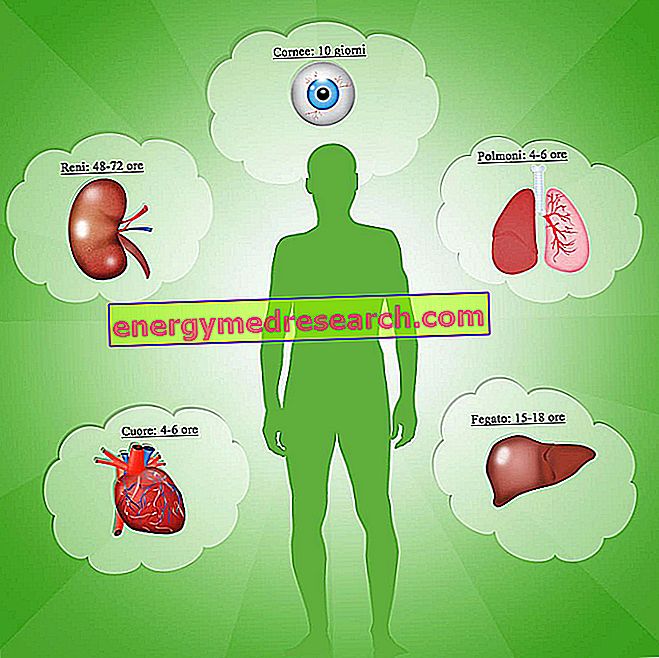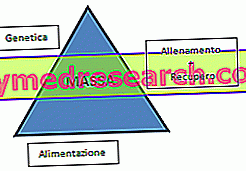Generality
Acute leukemia tends to become severe rapidly and, therefore, must be treated as soon as possible. If left untreated, the disease is lethal.

The therapy lasts several months and requires hospitalization of the patient, in addition to intensive hygiene measures to reduce the possibility of infections.
Acute Leukemia Treatment
Acute myeloid leukemia (AML)
The treatment of acute myeloid leukemia is mainly based on the use of high-dose cytotoxic chemotherapy and, if conditions permit, on stem or bone marrow transplantation . The goal of treatment is to eradicate the disease (complete remission) after the patient has passed the period of aplasia (bone marrow failure), allowing healthy stem cells to repopulate the marrow.
The therapy can be summarized with the following protocol:
- First phase of induction of remission : it is based on the use of two drugs, cytosine arabinoside (ARA-C, antiblastic) and daunomycin (intercalating agent), with the aim of rapidly destroying resistant leukemia cells and preventing early relapses .
- Subsequent post-remission therapy : once complete remission is achieved, the patient undergoes consolidation and maintenance therapy. For some forms of LMA, growth factors can also be used to increase the formation of blood cells.
In promyelocytic leukemia, a subgroup of AML, therapy with all-trans-retinoic acid (ATRA, acid derivatives of vitamin A) combined with chemotherapy has been shown to be promising.
Results of therapy
in general, complete remission can be achieved in about 70% of AML patients. Better rates of response to therapy (up to 85%) are achieved in patients under the age of 60 and without previous myelodysplasia.
The failures of chemotherapy treatment for acute myeloid leukemias are mainly attributed to two factors: resistant leukemia and death due to infection or bleeding. These consequences are more controllable than in the past, following the improvement of transfusion support therapy and with antibacterial and antifungal treatment. The mortality rate is closely related to age, with a 5-year survival of about 50% of children and about 20% of adults under the age of 60.
Acute lymphatic leukemia (ALL)
For patients, therapies modeled on prognostic criteria identified on the basis of immunological and cytogenetic characterization are proposed. In general, as regards the specific control of leukemic proliferation, patients are treated according to different phases.
First phase of treatment
- Induction therapy: cortisone therapy is performed, followed by intensive chemotherapy with cytostatics (a combination of a triad of drugs that includes vincristine, prednisone and anthracycline, commonly associated with L-asparaginase).
- Consolidation / intensification therapy : the aim is to control the minimal residual disease and prevent recurrences with ARA-C and methotrexate. Induction and consolidation therapy lasts for several months, during which the patient is hospitalized. Often, local chemotherapy or cranial irradiation and / or affected lymph nodes are also required to prevent and treat the meningeal localizations of leukemic cells. In the forms of positive ALL for the Philadelphia chromosome, patients can also be treated with inhibitors of tyrosine kinase activity (example: Imatinib, Dasatinib ...).
Second phase of treatment
- Maintenance therapy : a conventional treatment with cytostatics, 6-mercaptopurine (6-MP) and methotrexate, which lasts about a year and a half and which in most cases can be performed in an outpatient setting, is undertaken. In other cases, high-dose chemotherapy or total body irradiation followed by stem or bone marrow transplantation is considered.
- Bone marrow transplantation : the procedure is mainly aimed at treating patients at risk, in complete first remission. Patients with low-risk ALL can use this therapy in second remission. Generally, allogeneic marrow transplantation is preferred, since the autologous form does not show significant differences with respect to chemotherapy alone.
Results of therapy
In children it is possible to acquire a complete remission in 90-95% of cases and probably a cure in about two thirds of these. In adults the results are relatively lower (70% complete remissions).
Chronic Leukemias
In general, the treatment of chronic leukemias is less intensive and radical than the treatment of acute leukemias, but lasts longer. Most therapies can be administered on an outpatient basis (oral or intravenous).
It is not possible to completely prevent the disease from progressing, but treatment can help control the disease and significantly lengthen the chronic phase.
Healing of chronic leukemia is possible in rare cases and only if high-dose chemotherapy is used with subsequent stem cell or bone marrow transplantation.
Chronic myeloid leukemia (CML)
The treatment of chronic myeloid leukemia must start relatively early.
Depending on the situation and the clinical picture, patients are treated for several years with:
- Tyrosine kinase inhibitors (example: Imatinib, Nilotinib or Dasatinib): they act specifically on leukemic cells. They inhibit the tyrosine kinase activity of the BCR / ABL fusion protein, blocking the binding site with ATP, resulting in proliferative arrest and induction of apoptosis in leukemic cells. The introduction of these drugs and the demonstration of their efficacy have modified the patients' therapeutic algorithm, inducing complete and persistent cytogenetic and molecular responses over time (80-90% of cases).
- Interferon (IFN), in association or not with cytosine arabinoside : the protocols that foresee the use of the IFN allow, in some patients, a lengthening of the chronic phase and the induction of complete answers in 10-30% of the cases, but it is not tolerated by 20% of patients and is ineffective in the accelerated or blast phase.
- Chemotherapy with cytostatics or traditional antiblastic drugs (example: busulfan): it uses chemotherapeutic agents, such as hydroxyurea, 6-mercaptopurine and 6-thioguanine, specific for the cell cycle (or a particular phase thereof) to reduce the neoplastic mass in a fairly short time.
- High-dose chemotherapy, similar to that used for acute leukemias, proposed in an attempt to eradicate cancer cells.
- Stem cell transplantation (or bone marrow) : it is undoubtedly the only therapeutic procedure capable of eradicating the Ph + clone, but it is still burdened with high toxicity and therefore recommended only for patients with CML resistant to tyrosine kinase inhibitors and / or in an advanced stage of illness.
Chronic lymphatic leukemia (LLC)
Treatment of CLL must take into account the risk factors present at the time of diagnosis.
The purpose of therapy is in most cases restraining and non-eradicative.
Therapeutic chemotherapy strategies include, among the most active molecules, alkylating agents such as cyclophosphamide and chlorambucil . Alkylating therapy has proved effective in determining a partial or complete remission of the disease in 45-86% of cases.
Another class of drugs consists of purine analogues, among which fludarabine has proved to be the most effective molecule, with a remission ranging from 70-80%, of which about 30% is complete. Fludarabine is myelo- and immunosuppressive and is considered the first-line drug in the treatment of patients under the age of 65 and in good general condition. If the patient is elderly or in poor general condition the use of alkylating agents is evaluated, as these drugs cause fewer side effects.
In younger patients, especially when standard treatments do not promise a good prognosis, one can think of more aggressive therapeutic alternatives such as autologous or allogeneic transplantation . Allogeneic transplantation appears to be potentially curative, especially if treatment occurs before patients have registered chemoresistance.
Finally, an important treatment modality consists of monoclonal antibodies directed against the antigens expressed on the lymphocyte membrane of chronic lymphatic leukemia. These monoclonal antibodies act by inducing, after specific interaction with the antigen, complement-mediated cell lysis, antibody-dependent cytotoxicity and apoptosis.
Some examples are represented by the following monoclonal antibodies:
- Alemtuzumab - recognizes CD52, a molecule expressed by T and B lymphocytes at various stages of development;
- Rituximab - directed against CD20, antigen selectively expressed by B lymphocytes.
First-line therapy of LLC- Initial stage : patients should be monitored without any treatment until the initial signs of progression occur (swollen lymph nodes or spleen, worsening of blood values, etc.). Early treatment has proved incapable of prolonging the survival of these leukemic subjects. If risk factors are present, drug therapy involves the combination of: fludarabine ± cyclophosphamide ± rituximab. In younger patients, under certain circumstances, a stem or bone marrow transplant can be considered after high-dose chemotherapy / total body irradiation.
- Intermediate stage : if patients do not show clinical signs of a certain magnitude, patients should be kept under observation for 4-6 months or more. If signs of progression occur, appropriate treatment should be chosen taking into account age, patient status and life expectancy. For example, if the patient has age 65: chlorambucil / cyclophosphamide ± rituximab.
- Advanced stage : must undergo aggressive chemotherapy and, in selected cases, leukapheresis or total body radiotherapy.
Second-line therapy of the LLC
Second-line therapy, aimed at patients who have a relapse of the disease, is partly different and its success depends on factors such as the clinical stage, negative prognosis, the number of previous treatments and the last treatment's refractoriness.
Results of therapy
The prognosis of patients with CLL is very variable: survival varies from a few months to several decades. Some leukemic subjects present an aggressive clinical course and an evolution that is difficult to control, while others remain asymptomatic and do not require any therapeutic intervention for several years.



